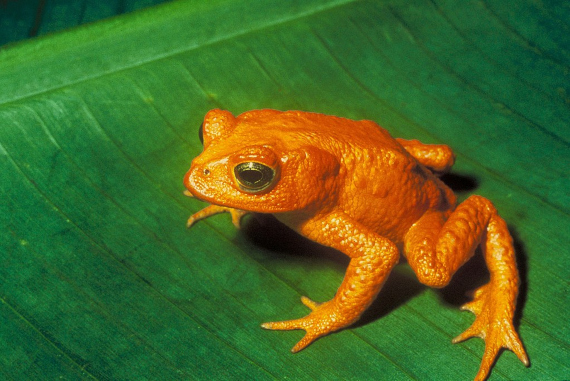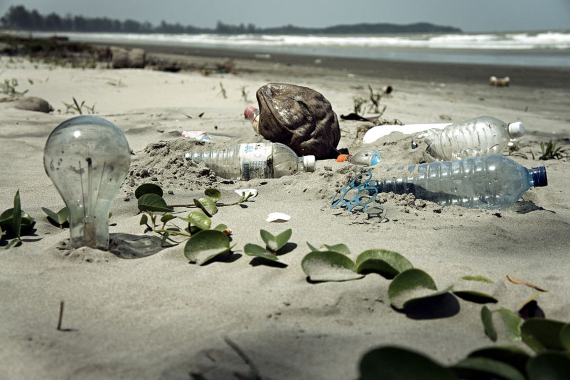Although scientists are still debating whether it is technically correct to say that we are in the midst of the sixth great terrestrial extinction—one that can be compared in similar terms to the five mass extinctions that marked the periods of the planet’s history—no one questions that we are witnessing an accelerated loss of species caused essentially by human activity. “Biodiversity loss is a life-threatening, blood-gushing leg wound that has been treated with the dab of a tissue,” Flinders University of Australia ecologist Corey Bradshaw tells OpenMind. To address this problem, in 2011 the UN declared the beginning of the Decade of Biodiversity, a ten-year initiative to combat the loss of species and biological wealth, which ends in 2020.
The figures of this serious planetary wound are alarming. In 2018 the Living Planet Report from the environmental organisation WWF estimated that since 1970 the population sizes of vertebrate species have suffered an average reduction of 60% of the 16,704 populations of the 4,005 species analysed. This is obviously an average figure, which indicates that for some species the loss has been even greater. According to the WWF, the decline is particularly marked in tropical species, especially in Central and South America, with 89%, and in freshwater animals, with 83%. Another study from 2017 found that, of half of all known vertebrates, 32% are in dangerous decline, which applies to the 177 mammal species studied. “No, we have not had any real gains in slowing the loss of biodiversity globally,” summarises Bradshaw.
Nature is declining
The UN itself warns that little or nothing has been achieved in the last decade, despite the specific initiative. In 2019, the Intergovernmental Platform on Biodiversity and Ecosystem Services (IPBES), the UN body for biodiversity equivalent to the Intergovernmental Panel on Climate Change (IPCC), warned in its most comprehensive report on the subject that: “Nature is declining globally at rates unprecedented in human history—and the rate of species extinctions is accelerating.” Every year we are losing numerous species, and up to one million are threatened with extinction. According to IPBES chairman Sir Robert Watson, “The health of ecosystems on which we and all other species depend is deteriorating more rapidly than ever. We are eroding the very foundations of our economies, livelihoods, food security, health and quality of life worldwide.”

“We do know that many of the targets under the Strategic Plan for Biodiversity 2011-2020 will not be achieved,” Elizabeth Mrema, Director of the Legal Division of the United Nations Environment Programme (UNEP) and currently Acting Executive Secretary of the Secretariat of the Convention on Biological Diversity (CBD), summarises to OpenMind. The targets Mrema refers to are the 20 targets defined at the 10th Conference of the Parties held in 2010 in Aichi, Japan, and which cover the study of the factors leading to biodiversity loss, their dissemination and the mitigation efforts required to stop the loss of species and promote ecosystem health, its benefits and its sustainable uses.
Targets still achievable
For Mrema, the causes of this failure are diverse and complex, but they can be summarised succinctly: “In general, the efforts devoted to achieving the goals were not enough.” The head of the CBD claims that many countries have been late in implementing the plan and fitting it into their respective national strategies, and that other forces not directly related to the CBD itself have intervened. On the other hand, she also acknowledges the weaknesses of the plan itself in not clearly establishing baselines to assess progress, or in delaying the development of the necessary indicators. “But despite these limitations, it is abundantly clear that the world has not achieved the Aichi Biodiversity Targets save for very few ones,” says Mrema.
At least, those few bright spots deserve to be mentioned as well. She hopes that the final push before the end of 2020 will still make up for some of the lost time and meet some of the targets, such as Aichi target 11, which calls for the protection of at least 17% of inland waters and 10% of coastal and marine areas. Mrema is confident that the latter figure can be reached before the end of the year. “We are already at 7.5% to reach the target and many countries are making efforts to ensure we get there before the year ends.”

However, after the necessary self-criticism, the important thing is to look ahead. And with the end of the Decade of Biodiversity the efforts are not stopping, but on the contrary they are being redoubled based on what has been learned. In January, the CBD secretariat published the draft of the post-2020 Global Biodiversity Framework, which will serve as a guide for the coming decades and which began to be negotiated in February in Rome. In October it will be taken to the 15th Conference of the Parties in Kunming, China.
Theory of change
But in order to reach UNEP’s vision for 2050, “living in harmony with nature”, serious obstacles stand in the way, which will not disappear without fundamental changes. “We can say that the causes of biodiversity loss are rooted in the patterns of our economies, and forces and behaviours that indirectly lead to the direct causes of biodiversity loss, such as climate change, pollution, land use change and invasive alien species,” says Mrema. To which Bradshaw adds another factor: “A massive and growing human population for the foreseeable future.”

Thus, the key aspect that the person in charge of the CBD emphasises is that the loss of biodiversity will not be stopped if this objective is not integrated into the core of the functioning of our economy. This is why the new post-2020 plan is based on a “theory of change”: “It provides a framework that can enable transformational change through the mobilisation of sectors such as agriculture, forestry, fisheries, business, indigenous peoples and local communities, women, youth and civil society.” Mrema stresses the importance that even institutions such as the World Economic Forum are now recognising that “biodiversity loss is a risk for business.” As Bradshaw points out, the focus must shift from short-term gain to long-term benefits.
For all these reasons, Mrema believes that there is reason to be confident that the future can be turned around. She sees a growing concern in society about environmental issues, especially among younger people. “We can be confident that a strong and ambitious agreement will be achieved, because many are calling for it. And many recognise that the benefits of such an agreement are widespread.”
Comments on this publication